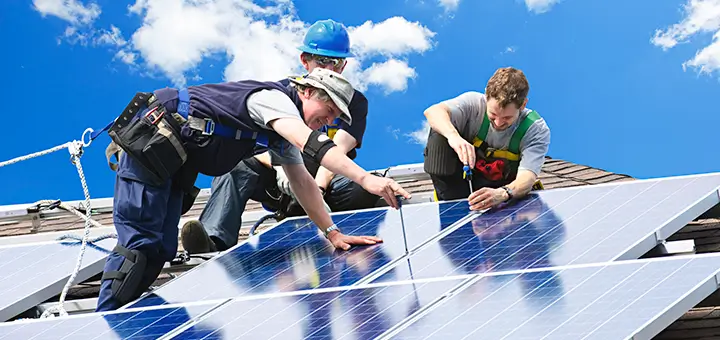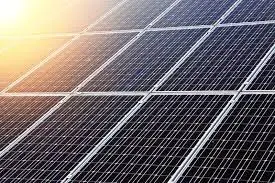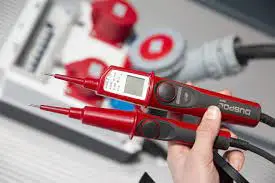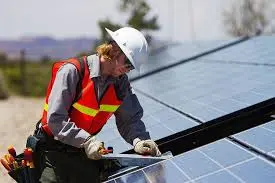
How To Install Solar Panels At Home: A Beginner’s Guide
By Steven Green | July 7, 2023
With the increasing awareness of climate change and the need for renewable energy sources, many homeowners are turning to solar panels as a way to reduce their carbon footprint and save on energy costs.
Installing solar panels at home can seem like a daunting task, but with the right information and tools, it is achievable even for beginners. Imagine being able to power your home using clean, renewable energy from the sun.
Not only would you be reducing your impact on the environment, but you could also potentially save money on your monthly electricity bills. This beginner’s guide will provide you with all the necessary information and steps to install solar panels at home.
From evaluating your home’s solar potential to selecting the right equipment and tools, preparing your roof for installation, connecting your system to the grid, and maintaining it over time – this guide has got everything covered.
With this knowledge in hand, you’ll be well on your way towards achieving mastery over renewable energy technology while making a positive impact on our planet.
RELATED POSTS:
19 Must-Have Solar Products That Are Changing The Way We Live

Key Takeaways
- Assess your home’s solar potential by evaluating factors such as roof orientation and shading.
- Proper installation and maintenance can lead to energy savings and potential earnings from surplus energy sold back to the grid.
- Working with a licensed professional experienced in solar panel installation can help avoid common mistakes and ensure proper installation.
- Regular maintenance and monitoring is necessary for optimal performance and longevity of your solar energy system.
- Key Takeaways
- Understanding The Benefits Of Solar Panels
- Evaluating Your Home’s Solar Potential
- Choosing the Right Solar Panels for Your Needs
- Selecting the Necessary Equipment and Tools
- Preparing Your Roof for Installation
- Installing Your Solar Panels
- Connecting Your Solar System to the Grid
- Maintaining and Monitoring Your Solar Panels
- Frequently Asked Questions
- Conclusion
Understanding The Benefits Of Solar Panels
The advantages of solar panels as a renewable energy source are multifaceted and include reduced environmental impact, potential cost savings, and increased energy independence.
Solar panels generate electricity from sunlight, which means they produce no greenhouse gas emissions or other pollutants that contribute to climate change. This is beneficial for the environment and helps reduce our carbon footprint.
In addition to reducing environmental impact, solar panels offer significant savings potential for homeowners by reducing monthly utility bills.
By generating their own electricity, homeowners can offset some or all of their energy costs depending on the size of their solar system and local electricity rates.
Over time, this can add up to substantial cost savings that help offset the initial investment in purchasing and installing a solar panel system.
Increased energy independence is another benefit of using solar panels at home. Instead of relying solely on the grid for electricity, homeowners can generate their own power and become less dependent on traditional utilities.
This can provide greater security during times of power outages or disruptions in service.
Evaluating your home’s solar potential involves assessing factors such as roof orientation and shading to determine how much sunlight your property receives throughout the day.
SUBSCRIBE:
Evaluating Your Home’s Solar Potential
Assessing the orientation and pitch of your roof is crucial to determining the potential solar energy yield of your property. The ideal orientation for solar panels in the northern hemisphere is facing south, with a tilt angle ranging from 15-40 degrees. However, east or west-facing roofs may still be viable options depending on their pitch and exposure to sunlight.
Before installing solar panels, it’s essential to check regulations in your area regarding permits, zoning laws, and other requirements. Some states have net metering policies that compensate homeowners for excess power generated by their solar systems.
Calculating energy savings can also help determine whether investing in solar panels is financially feasible for you. Evaluating your home’s solar potential involves assessing its orientation and pitch and checking local regulations before calculating potential energy savings.
Once you’ve determined that installing solar panels makes sense for you, the next step is choosing the right ones for your needs.


Choosing the Right Solar Panels for Your Needs
When choosing solar panels for your needs, it is important to consider their efficiency and placement. Solar panel efficiency refers to the ability of the panel to convert sunlight into usable electricity. The higher the efficiency rating, the more electricity a panel can produce.
Efficiency is affected by factors such as temperature, shading, and angle of inclination. Therefore, it is essential to choose panels that are rated to perform well in your specific climate conditions. Panel placement also plays a crucial role in optimizing energy production from solar panels.
It is recommended that panels be installed in areas where they receive maximum exposure to sunlight throughout the day. This may require strategic placement on rooftops or the installation of ground-mounted systems with adjustable angles for optimal positioning.
Choosing solar panels that have high efficiency ratings and proper placement will allow you to generate maximum energy output from your system. Keep these factors in mind when selecting solar panels for your home’s unique needs. In order to continue with installing solar panels at home, selecting the necessary equipment and tools is crucial for successful installation.


Selecting the Necessary Equipment and Tools
To successfully set up a solar panel system, it is essential to carefully consider the required equipment and tools needed for installation. Equipment options vary depending on the type and size of the solar panels you choose. Some essential equipment includes inverters, charge controllers, batteries, and mounting hardware.
It’s important to select equipment that is compatible with your chosen solar panels. Along with equipment choices, tool requirements should also be considered when planning for installation.
Some necessary tools include a drill with various bits (including masonry bits), screwdrivers (both flat and Phillips head), wire cutters/strippers, pliers, wrenches (including an adjustable crescent wrench), caulking gun, chalk line or laser leveler, ladder(s) or scaffolding, safety gear including gloves and eye protection.
It’s crucial to have all necessary tools and equipment on hand before beginning the installation process. This will help ensure that everything runs smoothly during installation without any unnecessary delays or setbacks.
Once you have selected your equipment and gathered all necessary tools, it’s time to move on to preparing your roof for installation. Preparing your roof for installation involves several steps that must be completed correctly in order for your solar panel system to function effectively.
Preparing Your Roof for Installation
Preparing your roof for the installation of a solar panel system is a crucial step in ensuring that the panels function effectively, and requires careful attention to detail. Before you begin installing your solar panels, it is important to conduct a thorough roof inspection to identify any potential issues that could impact their performance.
You will need to determine if your roof is strong enough to support the weight of the solar panels and assess its orientation and angle towards the sun. Once you have determined that your roof is suitable for solar panel installation, it is essential to take safety precautions before starting work.
This includes making sure that all equipment and tools are securely fastened and wearing appropriate protective gear such as gloves, hard hats, and safety glasses. It is also important to ensure that you have a stable ladder or scaffolding system in place before climbing onto the roof.
In addition to conducting a roof inspection and taking safety measures, it may be necessary to make some modifications or repairs before installing your solar panels. This can include fixing any leaks or damages on the roof surface or reinforcing weak spots with additional support beams.
By thoroughly preparing your roof for solar panel installation, you can ensure optimal functioning of your system while minimizing risks associated with inadequate preparation. To install your solar panels successfully, you must follow specific instructions depending on what type of mounting method you choose.
The next section will provide an overview of various mounting systems available and guide you through each step of how to install them properly on your prepared roof surface.


Installing Your Solar Panels
The installation of a solar panel system on your roof is an important step towards reducing your carbon footprint and increasing energy efficiency in your household. However, the process can be complicated, and it’s essential to take every necessary step carefully. Here are some tips for installing your solar panels:
- Make sure to work with a licensed professional who has experience installing solar panels. This will help you avoid common mistakes that can cause damage to both your roof and the panels.
- Before installing the panels, consider any costs associated with the process. For example, you may need to reinforce your roof or upgrade your electrical system to accommodate the new system.
- Ensure that all components of the solar panel system are properly assembled before installation begins. This includes mounting hardware, inverters, and wiring.
When connecting your solar system to the grid, there are additional considerations you must keep in mind. It’s important not only to ensure that everything is connected correctly but also that you follow local regulations regarding permits and inspections. By taking these steps seriously, you can enjoy energy savings while minimizing any potential issues down the line.
Connecting Your Solar System to the Grid
Connecting your solar system to the grid requires careful attention to local regulations and proper installation of all components. Grid connection requirements vary by location, so it’s important to research the specific rules and regulations in your area before connecting your solar panels.
In general, you’ll need to have a certified electrician install a transfer switch that allows for seamless switching between grid power and solar power. Additionally, many areas have net metering regulations that allow homeowners with solar panels to receive credit for excess energy they produce and feed back into the grid. This means that you can potentially earn money by selling the surplus energy your solar panels generate.
However, it’s crucial to understand the specific regulations in your area and work with a qualified installer who is familiar with these rules. Once your system is properly installed and connected to the grid, it’s important to regularly maintain and monitor your solar panels to ensure optimal performance.
This includes cleaning them periodically, checking for any damage or wear on wires or other components, and keeping an eye on energy production levels. By taking care of your solar panels properly, you can continue generating clean energy for years to come while also saving money on your utility bills.
Maintaining and Monitoring Your Solar Panels
To ensure optimal performance and longevity of your solar energy system, regular maintenance and monitoring are necessary. One way to monitor your solar panels is through remote monitoring systems. These systems allow you to keep track of the energy production, identify any issues with the panels or inverter, and even receive alerts if there are any problems detected.
Having a remote monitoring system installed can save you time and effort by allowing you to easily check on your solar panel’s health without having to physically inspect them. Another important aspect of maintaining your solar panels is keeping them clean. Dirty panels can significantly reduce their efficiency, so it’s essential to establish a cleaning schedule for them.
The frequency at which you need to clean depends on various factors such as location, weather conditions, and surrounding environment. Generally speaking, it’s recommended that you clean your panels every six months or so unless they get especially dirty from dust or bird droppings.
In addition to these tasks, consider scheduling an annual inspection with a professional service provider who can do a more comprehensive checkup on the entire system. They can assess the wiring connections, inverters, electrical components while making sure everything is working correctly and efficiently.
By following good maintenance practices like remote monitoring systems installation, cleaning schedules creation plus regular inspections by professionals will help prolong the life of your solar energy system while ensuring maximum power output for many years ahead.
Frequently Asked Questions
How do I determine the size of the solar panel system I need for my home?
Determining the size of a solar panel system for a home involves calculating energy needs and considering solar panel efficiency. Factors such as location, available sunlight, and household electricity usage should also be taken into account for optimal results.
How long does it typically take to install solar panels on a home?
The typical duration for installing solar panels on a home varies depending on factors such as the size of the system and the complexity of the installation. Cost estimation should be done before hiring professional services.
What kind of maintenance is required for solar panels?
Proper maintenance is essential for solar panels to function efficiently. Regular cleaning of the panels, including removing debris and dust, is necessary. In case of damage, prompt repair or replacement of faulty parts is crucial to prevent system failure and ensure optimal performance.
Can I install solar panels on a flat roof?
Flat roofs can be a suitable location for solar panel installation. However, there are pros and cons to consider such as limited space, potential shading issues, and maintenance challenges. The best placement for efficiency may vary depending on the specific roof characteristics.
Will installing solar panels increase the value of my home?
Solar panel financing options and the impact of location can affect the value of a home with solar panels. Studies show that homes with solar panels sell for more, but the increase in value varies depending on location and financing options.
Conclusion
In conclusion, installing solar panels at home is a complex process that requires careful planning and execution. The benefits of solar energy are numerous, from reducing your carbon footprint to saving money on your electricity bills. Before embarking on this journey, it is important to evaluate your home’s solar potential and choose the right equipment for your needs.
Once you have selected the necessary tools and prepared your roof for installation, it is time to install your solar panels. This step requires attention to detail and precision, as any mistake could compromise the effectiveness of your system.
Finally, connecting your solar system to the grid and maintaining it over time will ensure optimal performance.
Overall, installing solar panels at home is not an easy task but it is a rewarding one that can make a significant impact on our environment. By harnessing the power of renewable energy sources like the sun, we can reduce our dependence on non-renewable resources while contributing to a more sustainable future.
So take the leap and join the growing number of homeowners who are embracing this clean energy revolution – you won’t regret it!
